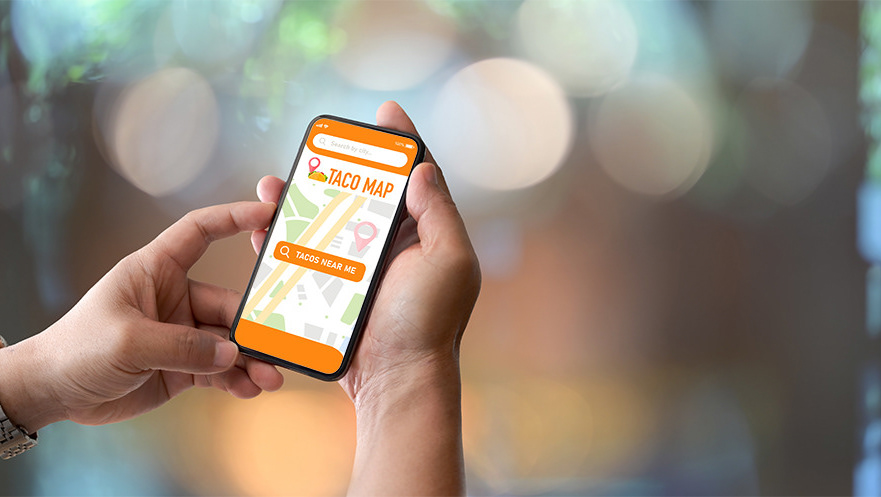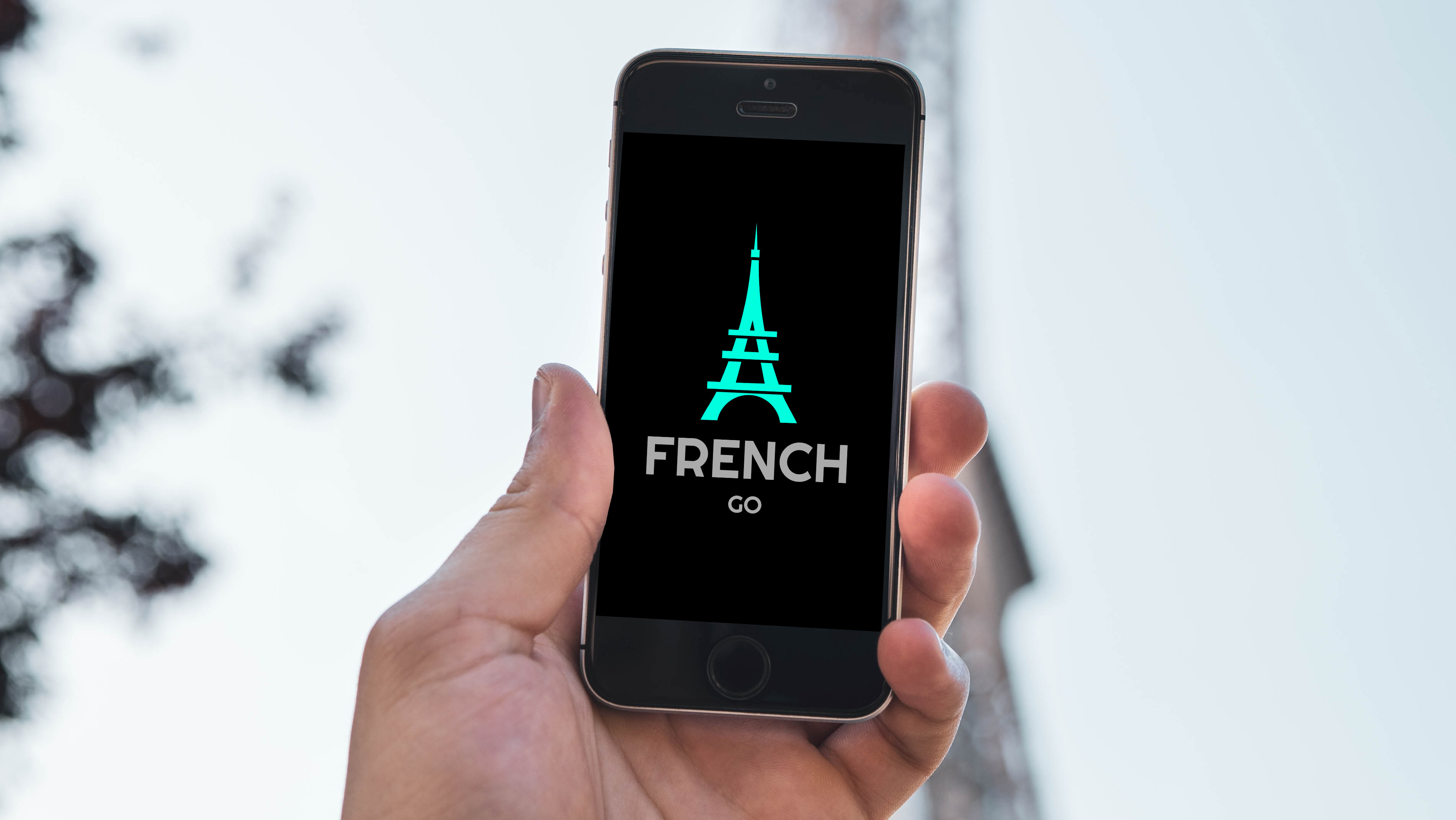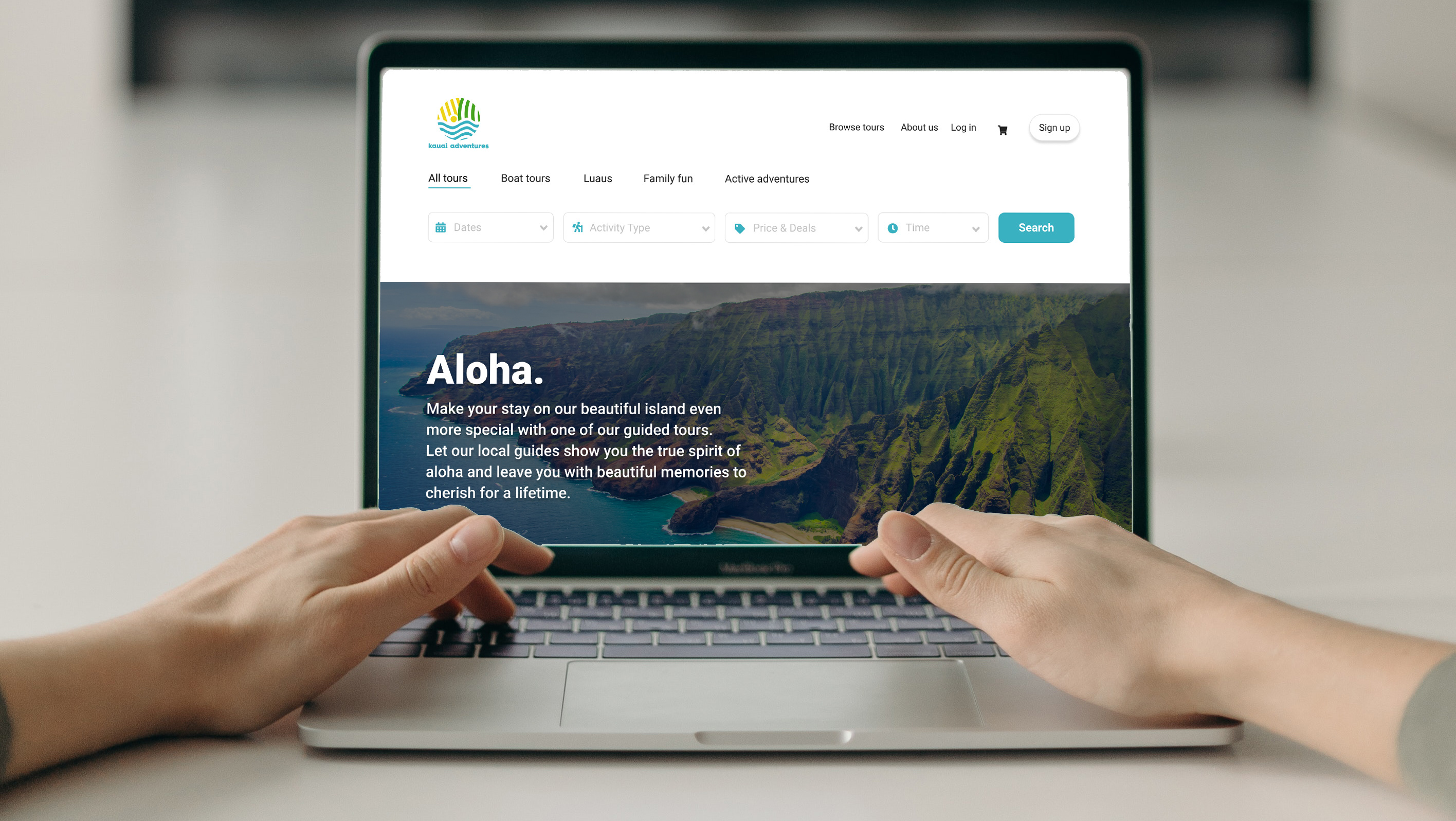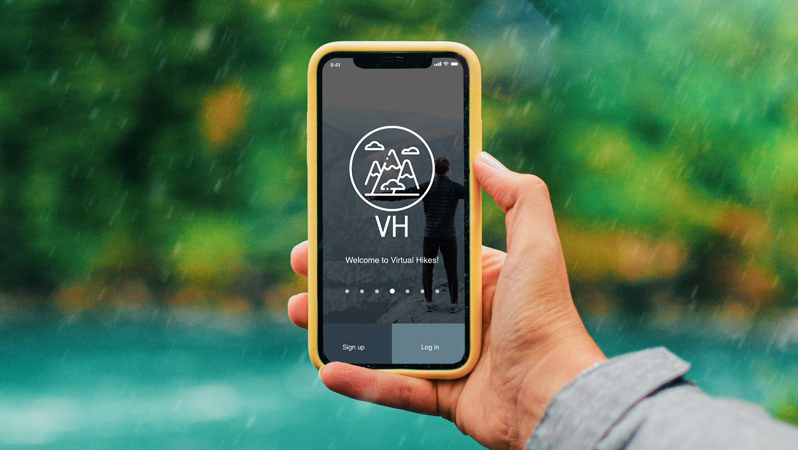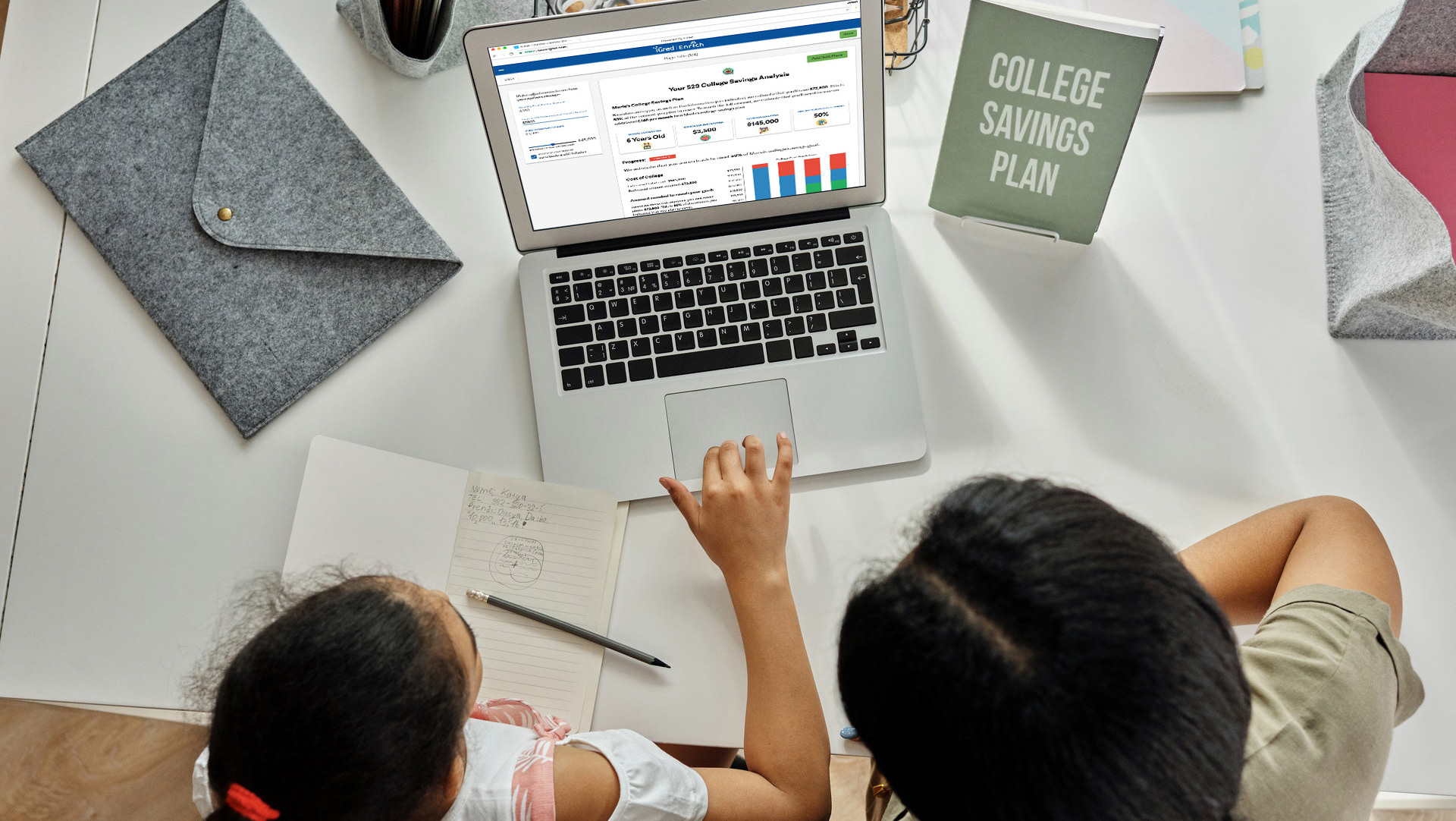Project Overview
There have been countless studies that have shown that dogs need socialization in order to be happy and healthy. There are apps out there for humans to connect with one another, but the same can’t be said for canines. That’s where Paw Pals comes in.
PawPals is an app for dog owners to connect and find canine buddies for doggie play dates, dog park meetups, and walking buddies in their area. Humans might just find some new friends, too.
Over the course of a few weeks, I took this project from the ideation and initial research phase through conception of the app flow and initial wireframes, high fidelity mockups, and clickable prototype of the signup and profile creation process.

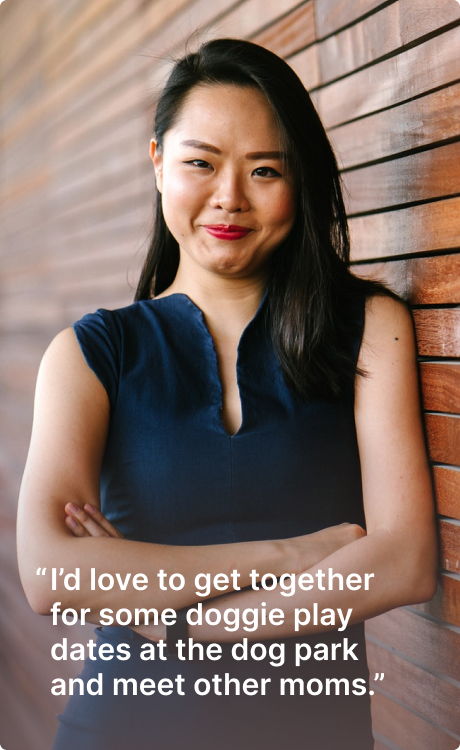
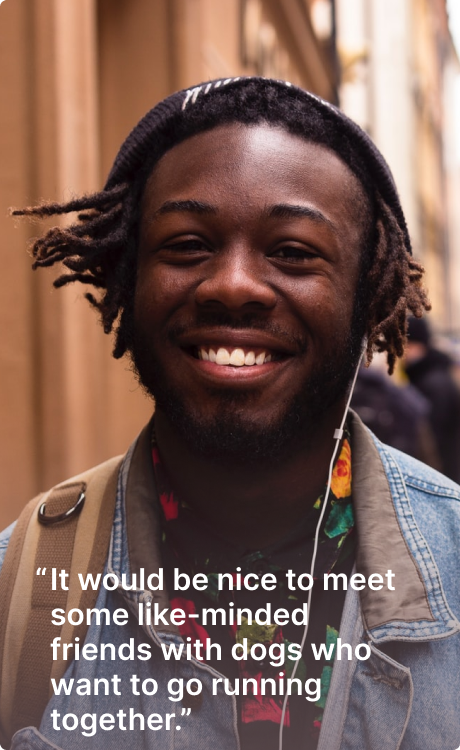

The Hypothesis
The goal of Paw Pals is to connect pet parents and provide socialization for dogs through exercise, activities, and meetups. Humans can find like-minded friends, too. The mission is to create an engaging online community, and to create more dog-friendly local communities. The app is structured to encourage meetups and social engagement. Users create their profile to introduce themselves, listing their interests, availability, hobbies, and desired types of activities. Pet profiles include information on dog size, breed, age, energy levels, temperament, and more, so they can connect with compatible canine friends.
four specific functions that this app will do:
Connect dog owners.
Dog socialization.
Find new (human) friends.
Exercise/Activities/Fun
Dog socialization.
Find new (human) friends.
Exercise/Activities/Fun
My Role:
UX/UI Designer, UX Researcher.
TOOLS:
Figma, Balsamiq, Pen & Paper, Lucidchart, Adobe Illustrator
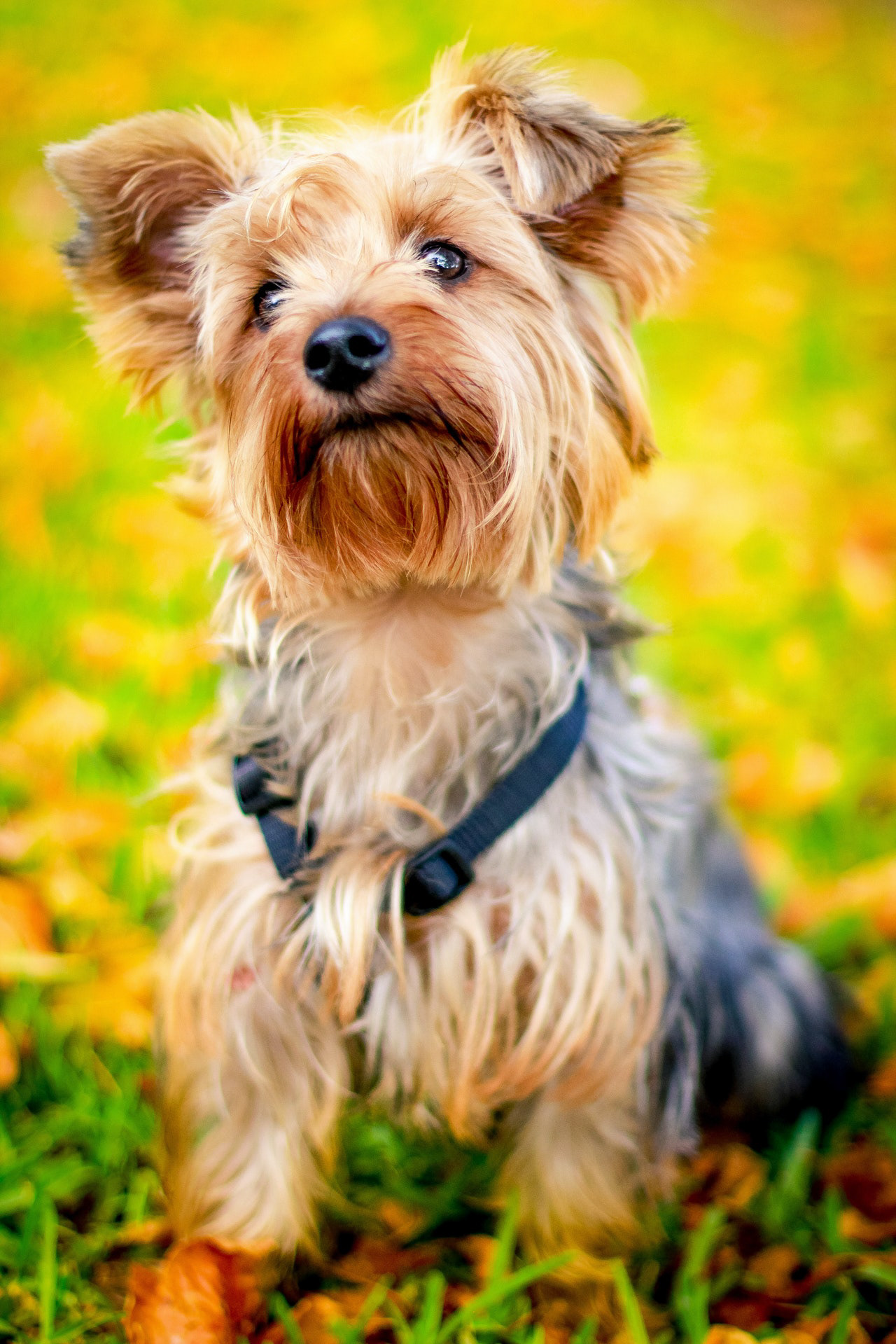
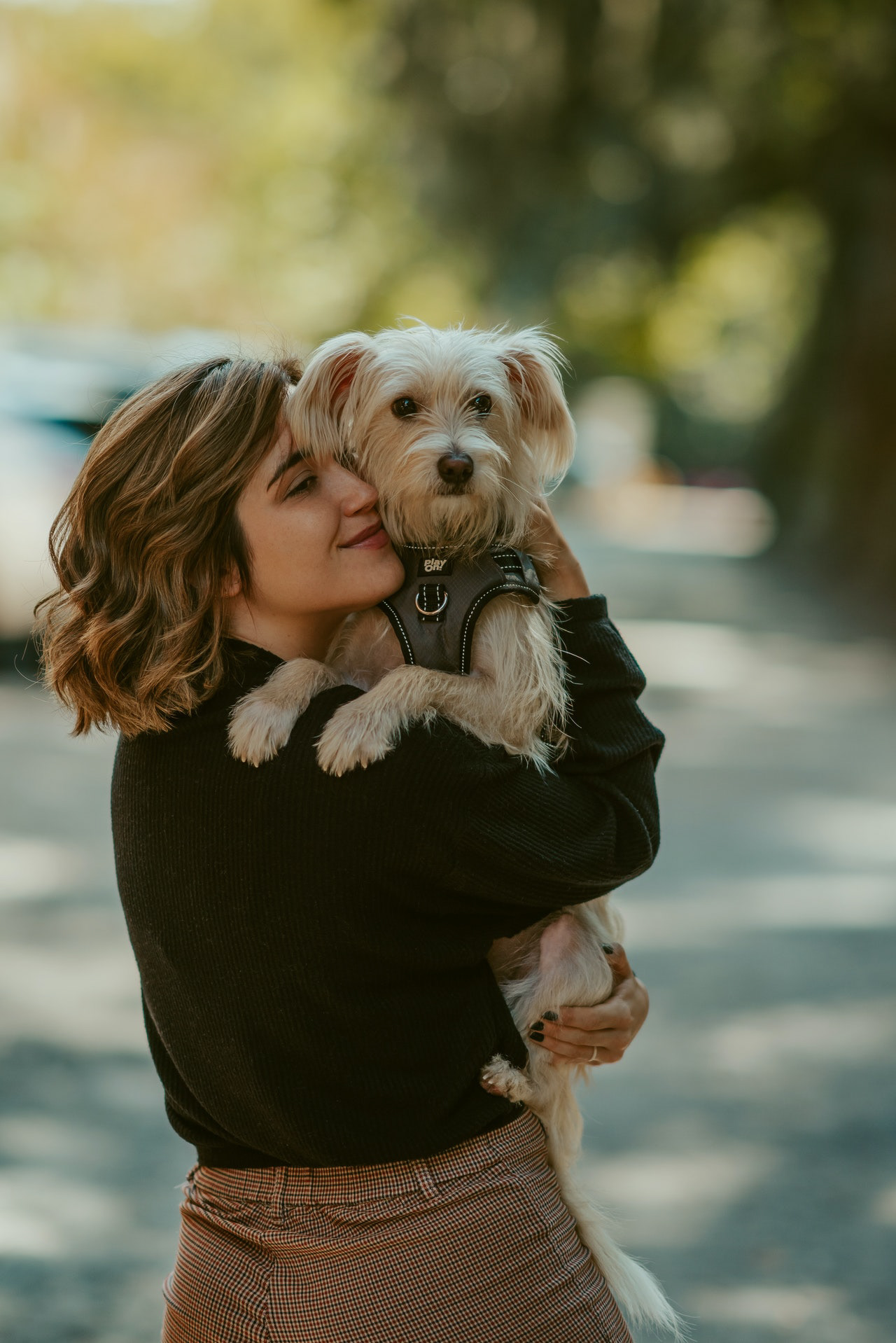
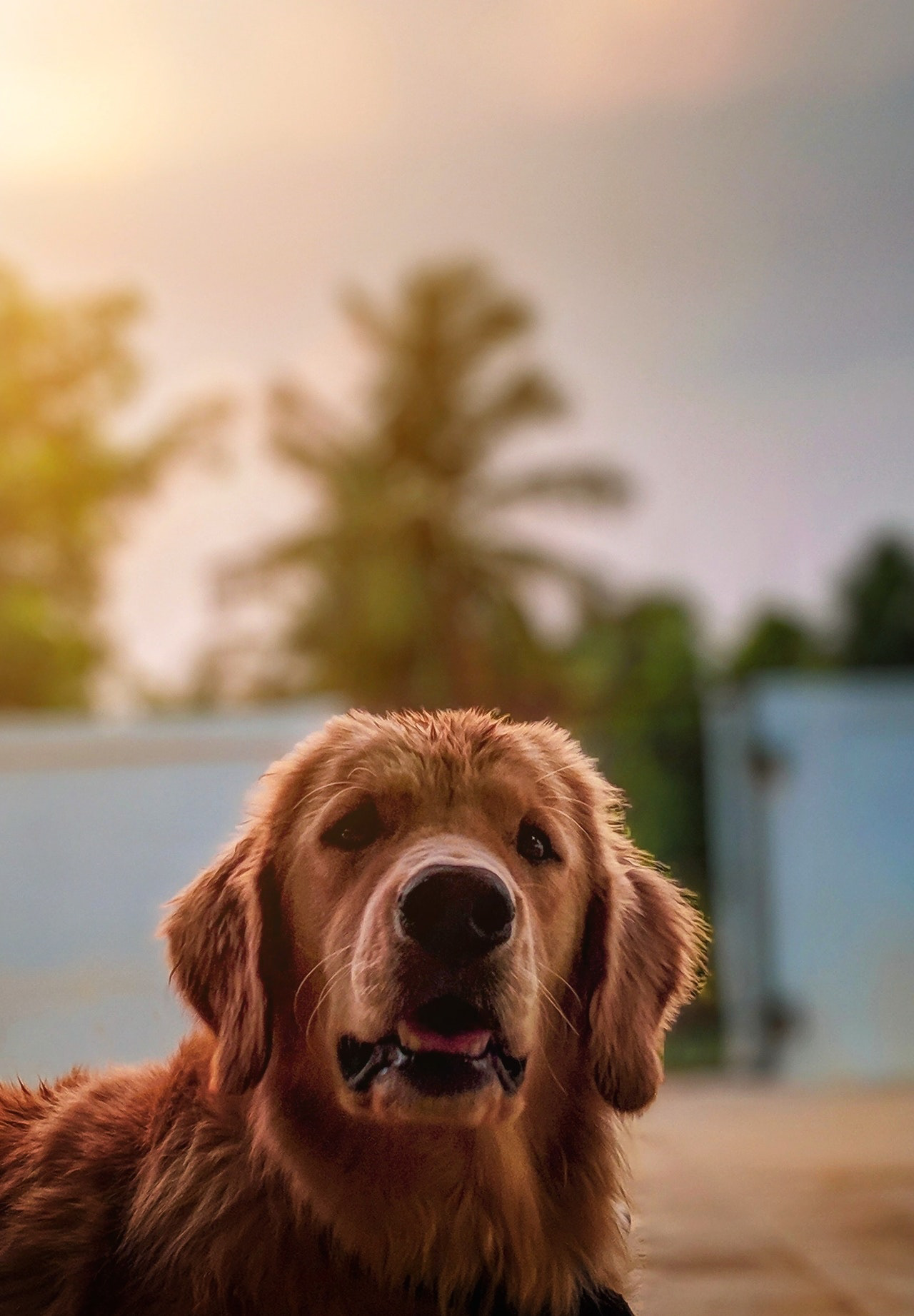

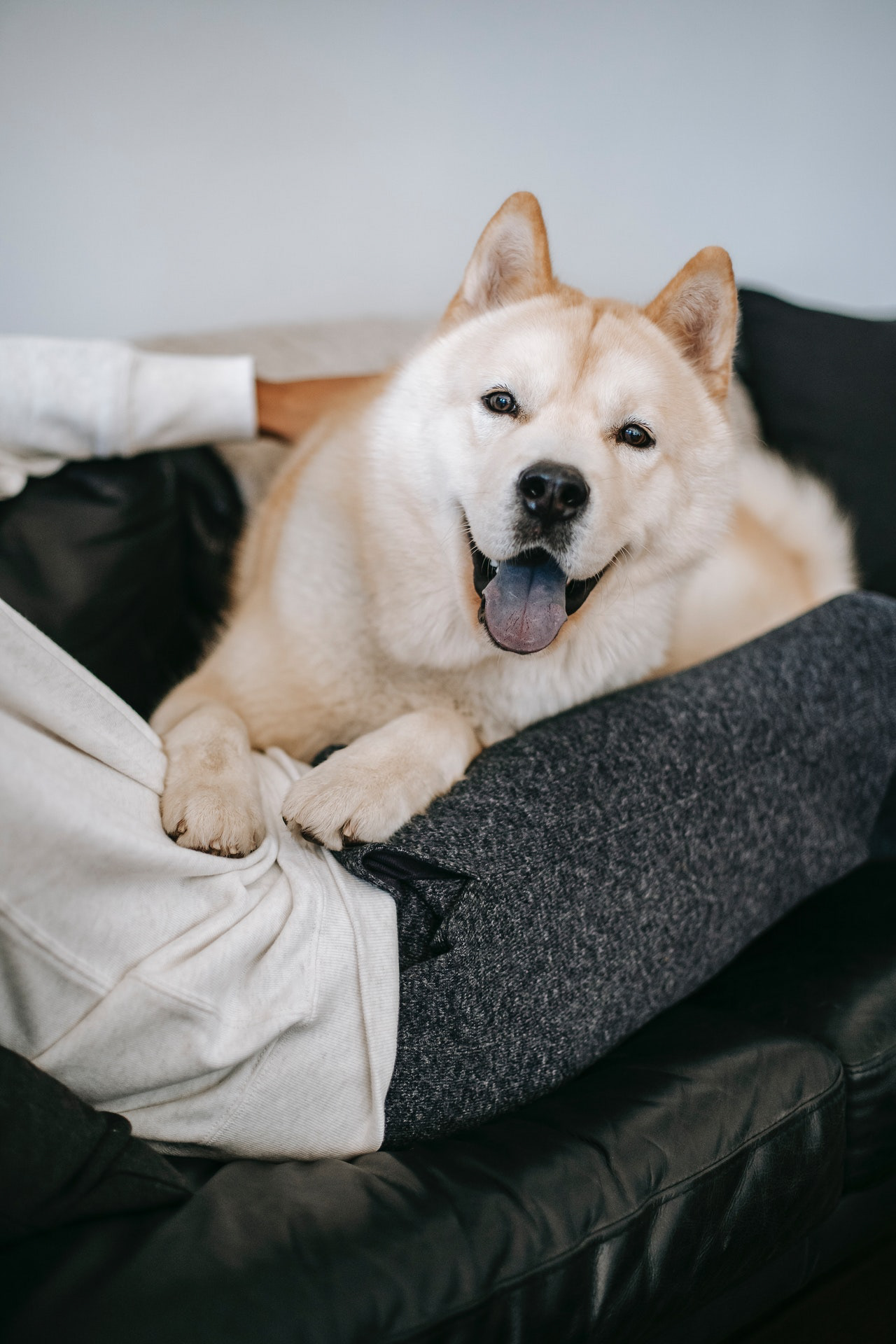
Project Plan:
Phase 1- Research. To include Competitive Analysis, User Research, and User Personas.
Phase 2 - Design. To include Information Architecture, Wireframes, UI Design, and Prototype creation.
Phase 3 - Evaluation. To include Usability Testing and Edits to Prototype.
Phase 2 - Design. To include Information Architecture, Wireframes, UI Design, and Prototype creation.
Phase 3 - Evaluation. To include Usability Testing and Edits to Prototype.
Phase 1 - Research
Competitive Analysis:
For the competitive analysis, I looked both inside and outside of the pet-app space to evaluate other successful apps which have similar functionality.
Findings
All three of these apps, although quite different from one another, featured functionality designed to help people connect to each other for a shared purpose.
From a UX perspective, this means that ease of connection and providing enough information to help users sift through profiles to find a perfect match would be the top priority.
UX Findings
All three of these apps were researched from a UX perspective. All of them had interesting functionality that complimented their stated missions. What will make Paw Pals different is that it will be the first community of its kind to exclusively connect pet parents and pets with one another.
• From Tinder, I learned some of the building blocks for creating profiles that are succinct and immediately engaging.
We want to let users get a sense of who somebody is and who their dog is at a glance without spending too much
time on profiles that may not be a good match.
• From Meetup, I learned about creating local, like-minded communities. Paw Pals is ultimately an app for locals to get
together and meet new friends, attend pet-focused events and get-togethers, etc., so this was a great opportunity to
get a feel for what else is out there in this space.
• From Rover, I learned the importance of compatibility with scheduling and reference checking. They also have a
great search functionality to help users find the best match for their needs.
As a result of these findings, Paw Pals will take learnings from these apps with similar functionality to create a unique community just for connecting pets, using a similar, profile-based connection system.
User Research & Personas:
I interviewed 5 people who expressed an interest and desire to meet new friends and socialize their dogs. I was interested in their current lifestyles and what they thought a canine-focused meetup should look like. The interviews were conducted via Skype and recorded for note-taking purposes.
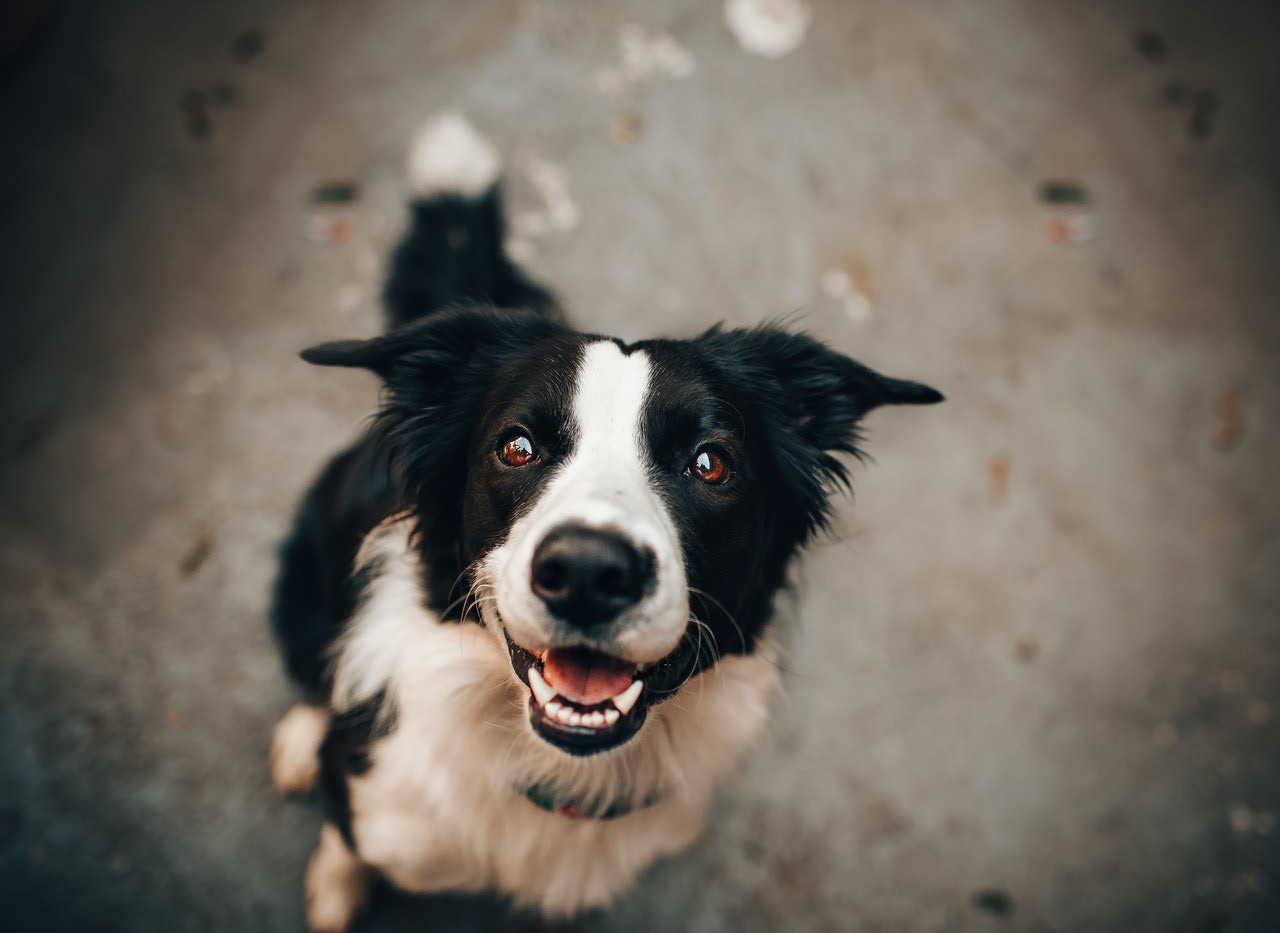
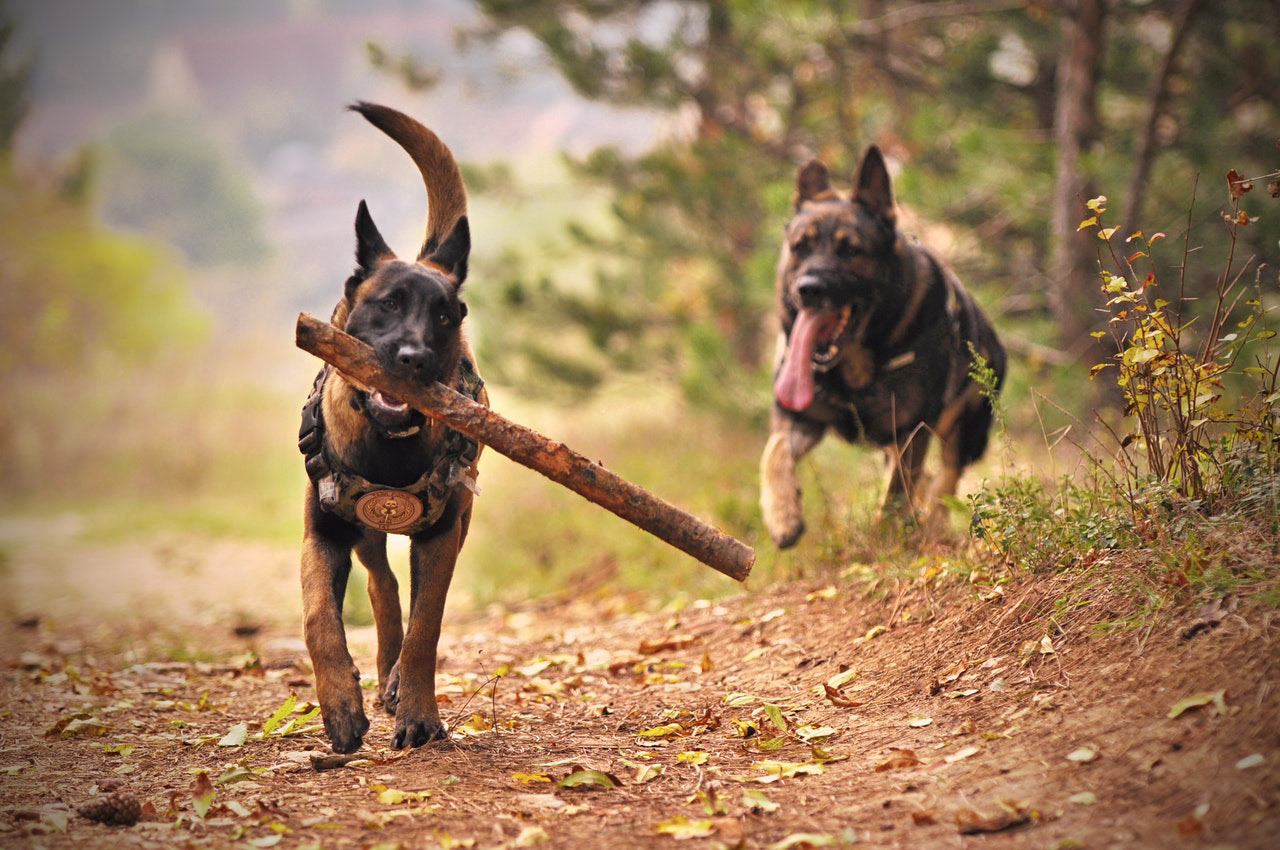
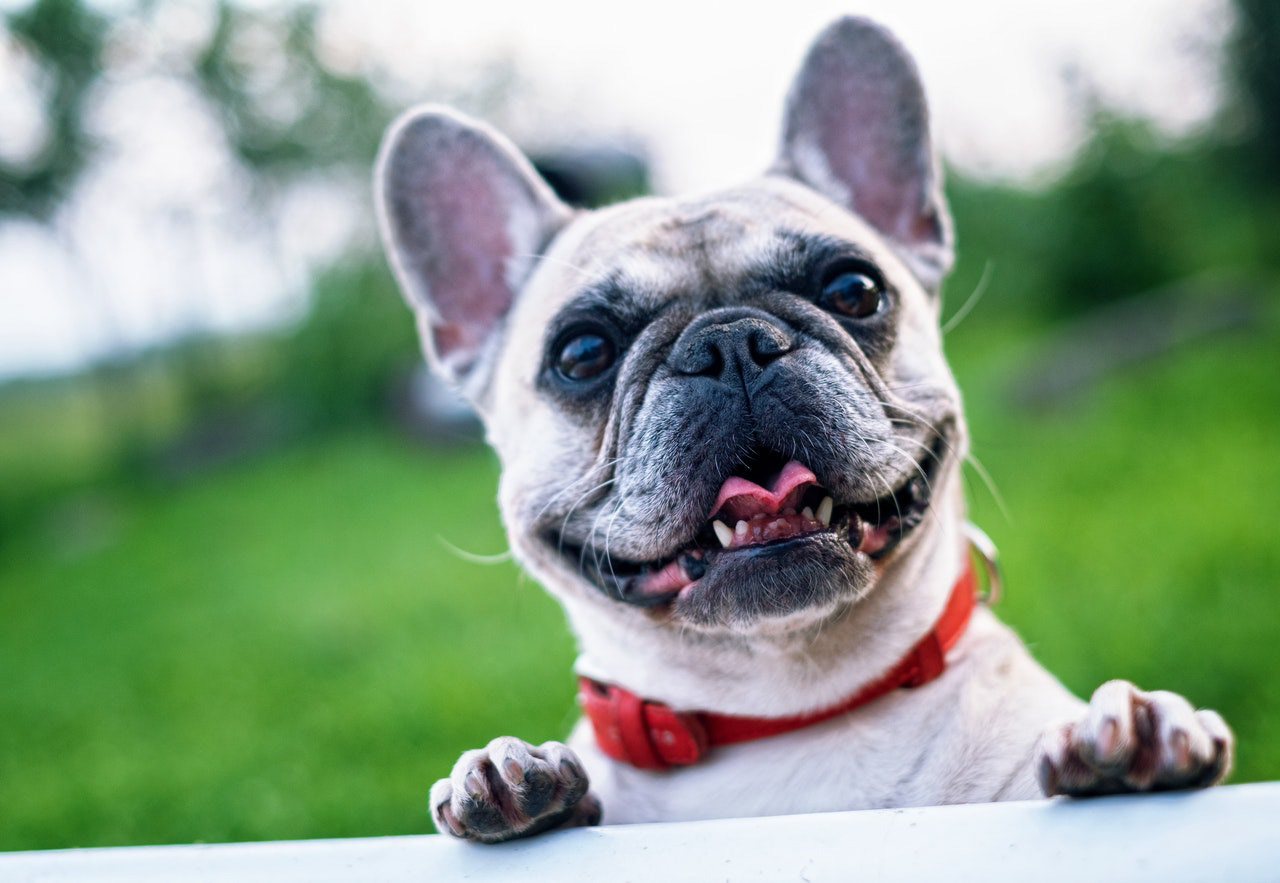
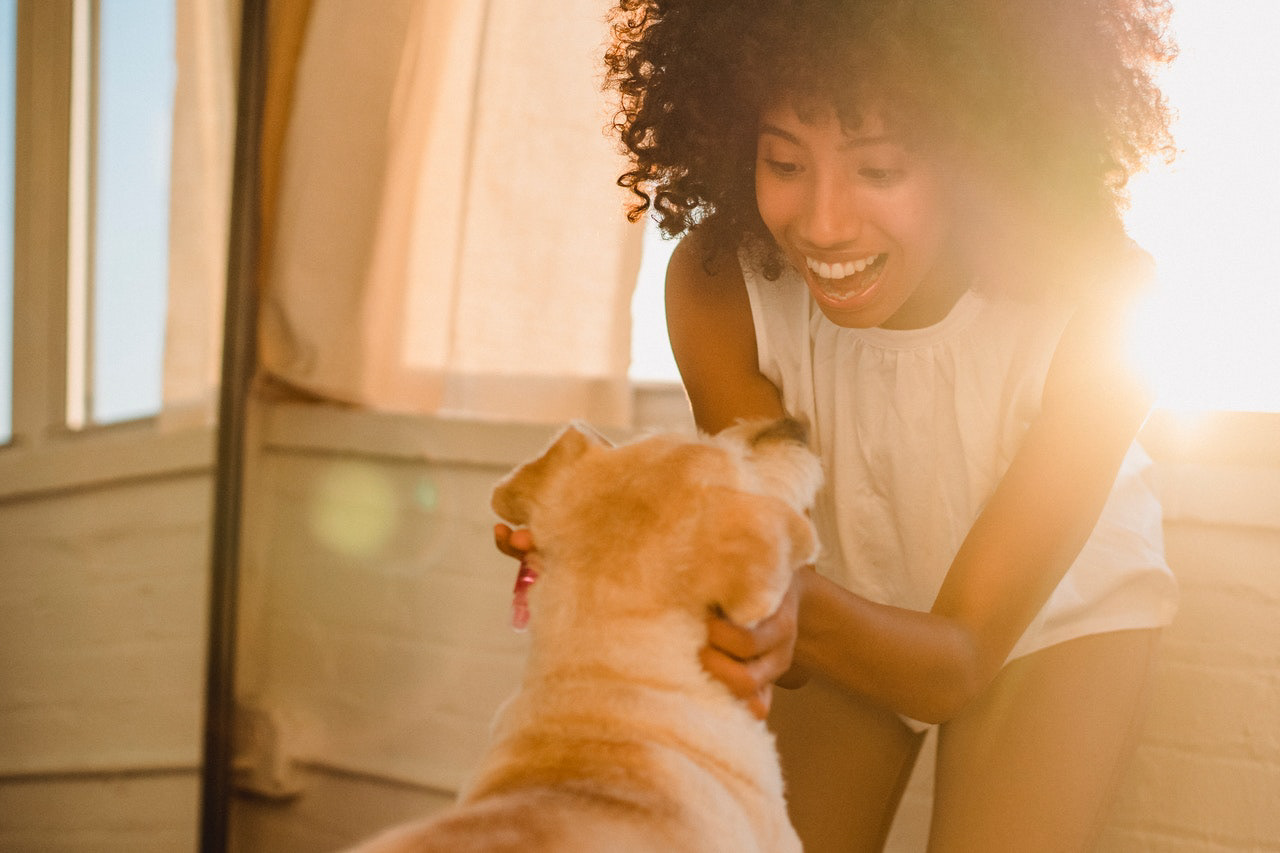
main takeaways from the interviews:
• Most users had a restrictive schedule, either due to work or other obligations such as childcare, extracurriculars, etc.
• Users wanted compatibility with both the other people and their dogs. They wanted to meet people who they could be
friends with (i.e. similar age groups, schedules, stage of life, etc). For the dogs, compatibility was a particular concern,
in particular the size of dog, age of the dog, and energy levels. Nobody wants a large, youthful, exuberant Golden
Retriever to trample their elderly Chihuahua, for instance.
• People had different ideas about what kinds of meetups they might be interested in. Many expressed a desire to meet
others at the dog park, but others wanted to meet in public areas on popular walking trails, or even to get together at
dog-friendly coffee shops.
• Despite expressing an interest in this kind of app, nobody wanted to pay for this kind of service.
• Social anxiety was a big reason 2 of my participants were hesitant to meet people they met on an app.
• Users wanted compatibility with both the other people and their dogs. They wanted to meet people who they could be
friends with (i.e. similar age groups, schedules, stage of life, etc). For the dogs, compatibility was a particular concern,
in particular the size of dog, age of the dog, and energy levels. Nobody wants a large, youthful, exuberant Golden
Retriever to trample their elderly Chihuahua, for instance.
• People had different ideas about what kinds of meetups they might be interested in. Many expressed a desire to meet
others at the dog park, but others wanted to meet in public areas on popular walking trails, or even to get together at
dog-friendly coffee shops.
• Despite expressing an interest in this kind of app, nobody wanted to pay for this kind of service.
• Social anxiety was a big reason 2 of my participants were hesitant to meet people they met on an app.
Based on these findings, the biggest problem would be to create a safe, friendly environment where people could get to know each other on their own terms before deciding when and where to meet up with their dogs in the real world.
user personas:
The user interviewees were selected to reflect the different kinds of people who might be pet parents. User personas were created in order to better reflect these different personalities and their desires.

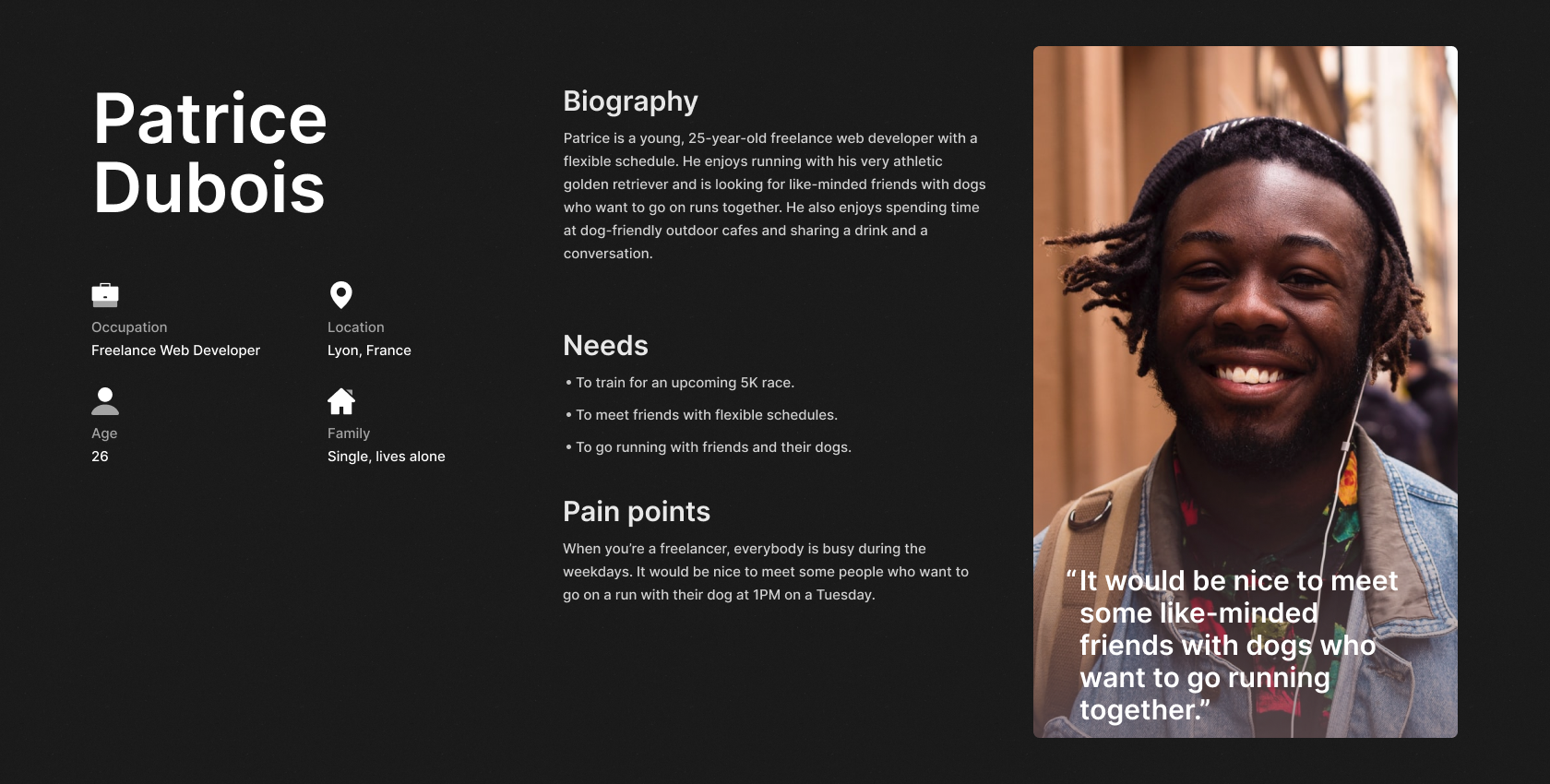
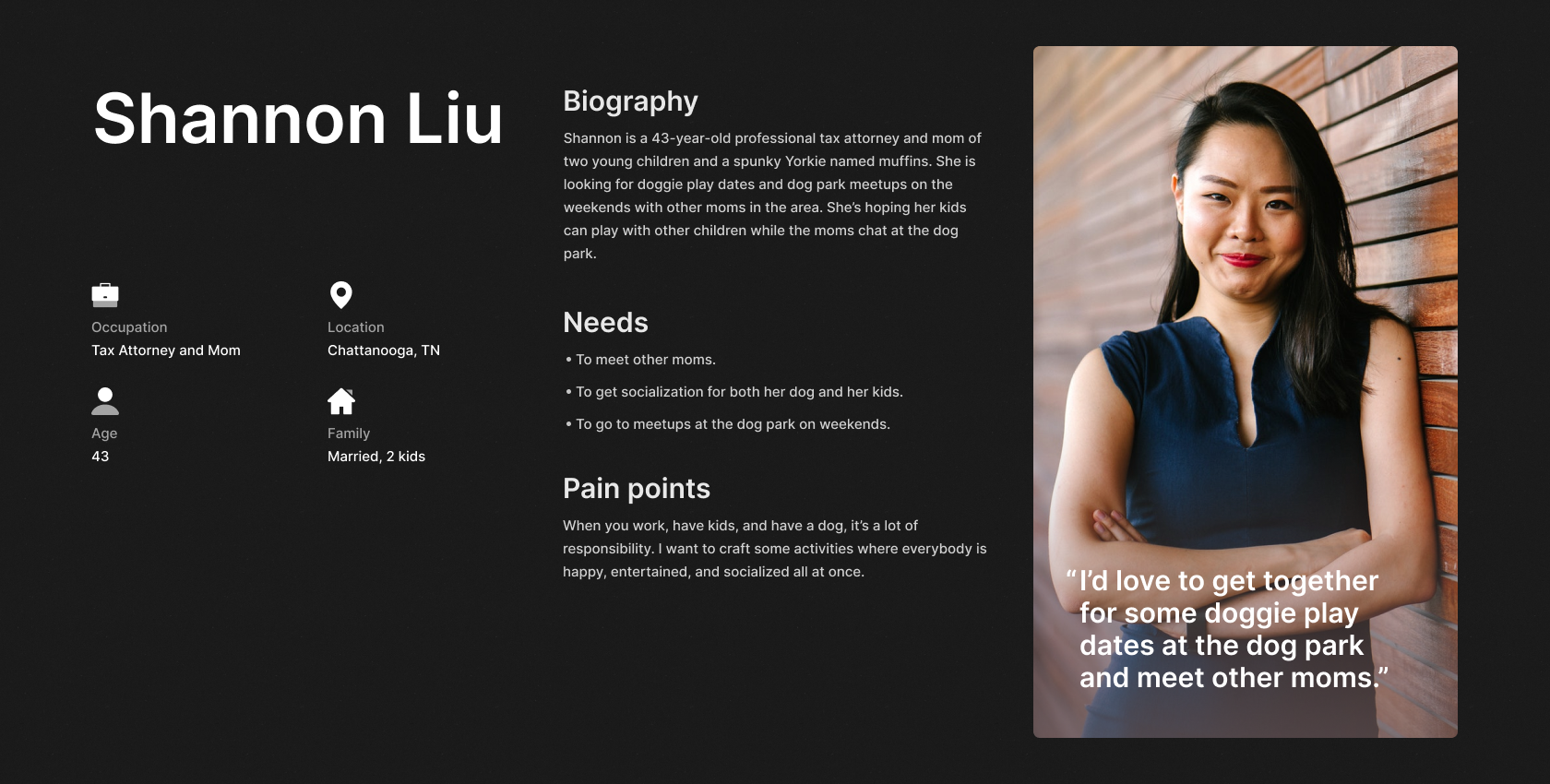
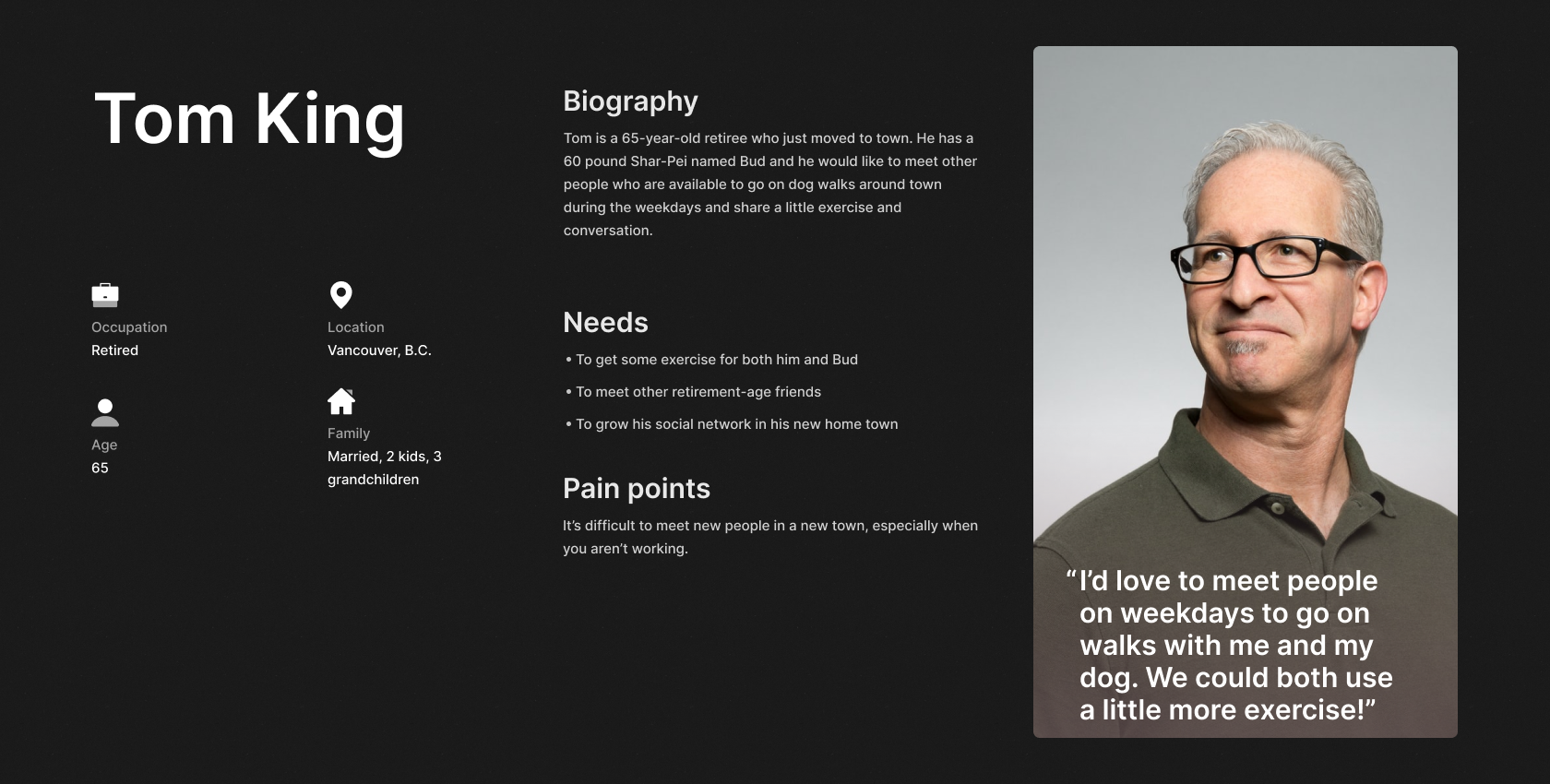
Phase 2 - Design
Information Architecture
The design goal was to create a working prototype of the signup and profile creation functions of the app. These functions are outlined in a flow chart. Below you can see the sign up and profile creation flow
paw pals app flow:
Since one of the top priorities for this app would be creating profiles that tell a story about who the user is and who their dog is and then using that information to connect users to each other, I wanted the user to experience the profile creation flow first and foremost when signing up for the app so they could hit the ground running with the rest of the app’s functionality.
wireframes of sign up and log in user flows:
I used Balsamiq to create wireframes because of the speed and advantage of quick edits and iterations. This makes it easy to test different ideas quickly and efficiently. Below you can see some of the wireframes that were created for the sign up and log in user flows.
Click on an image to see it larger.




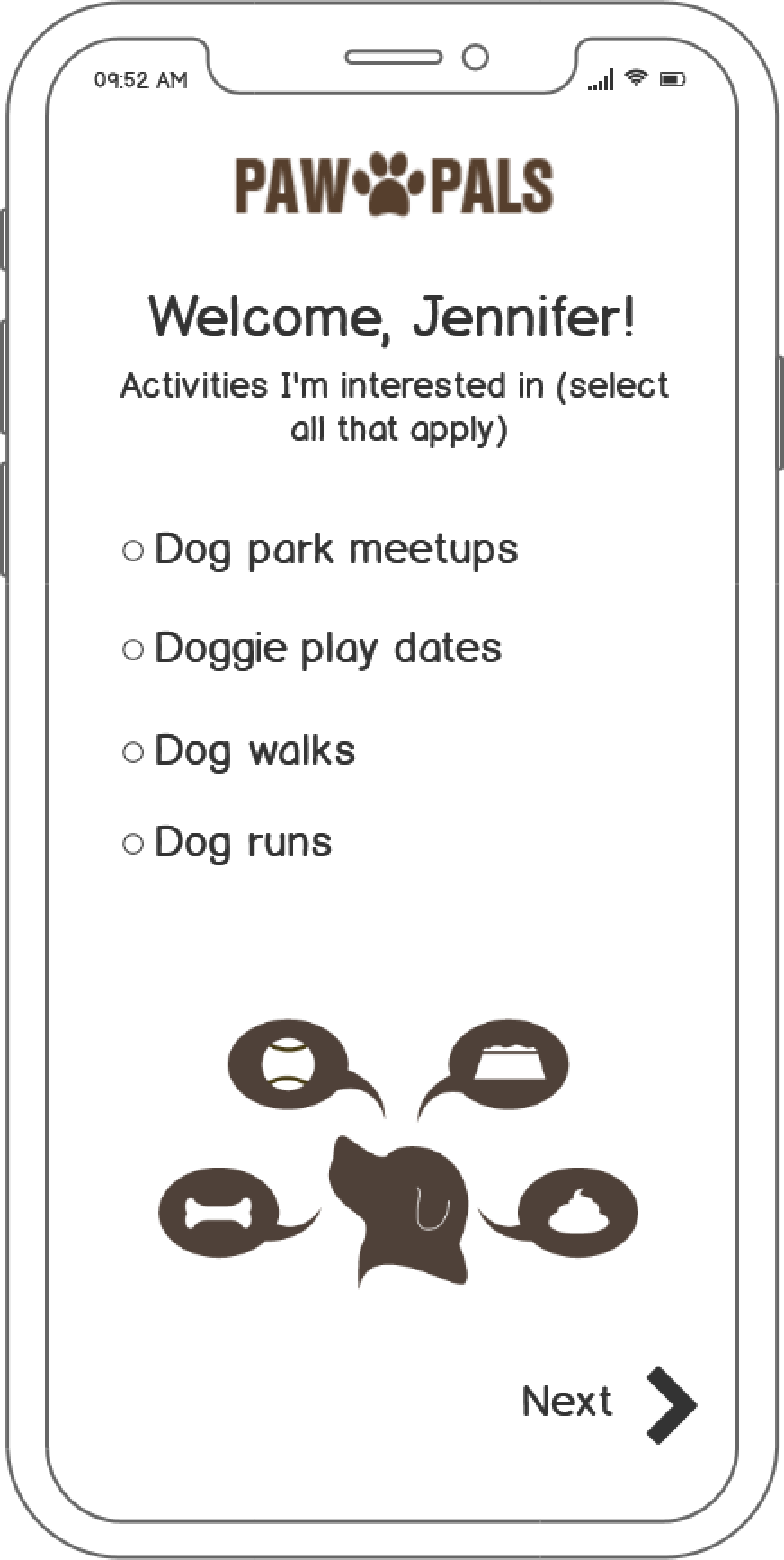
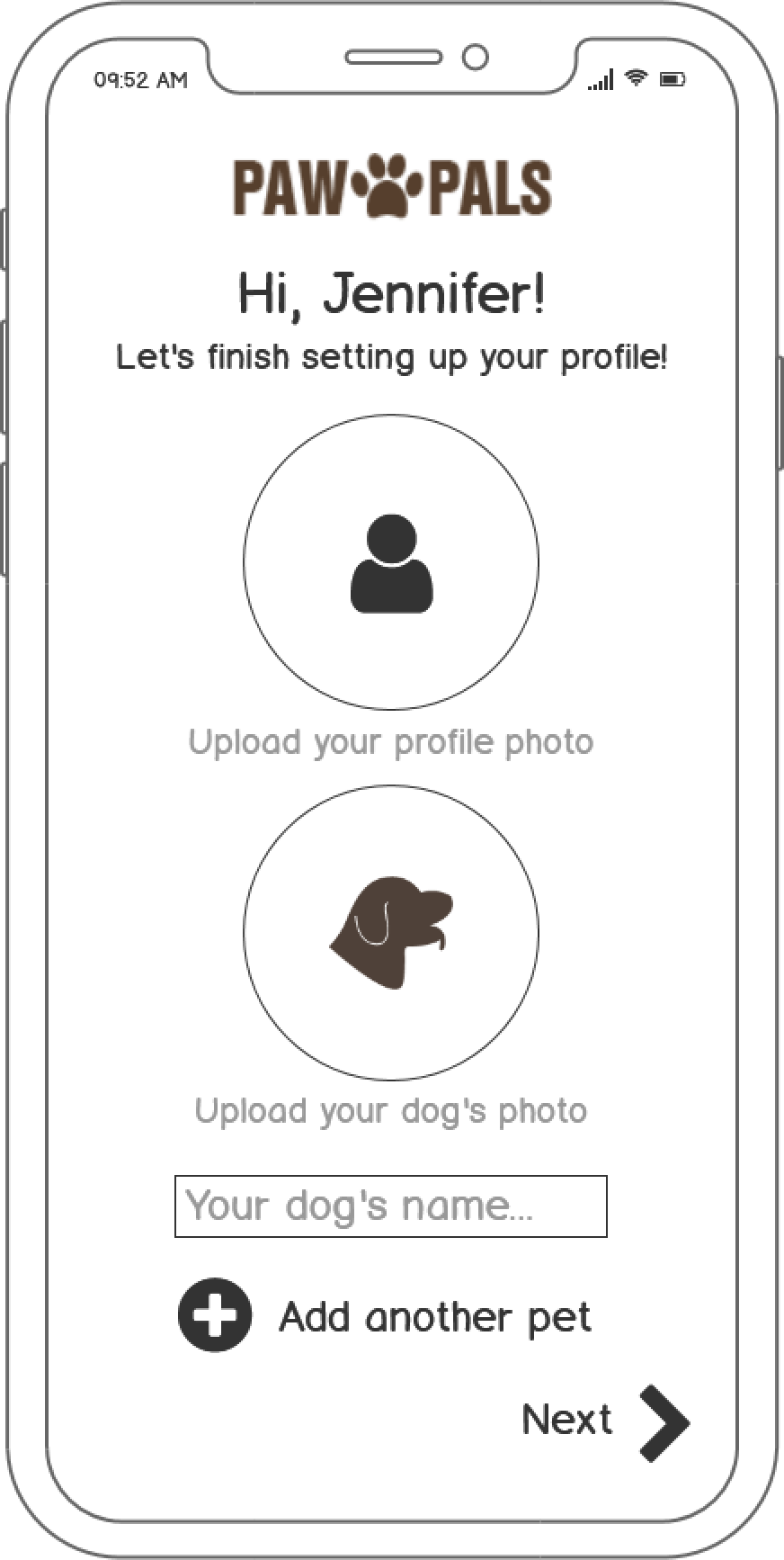
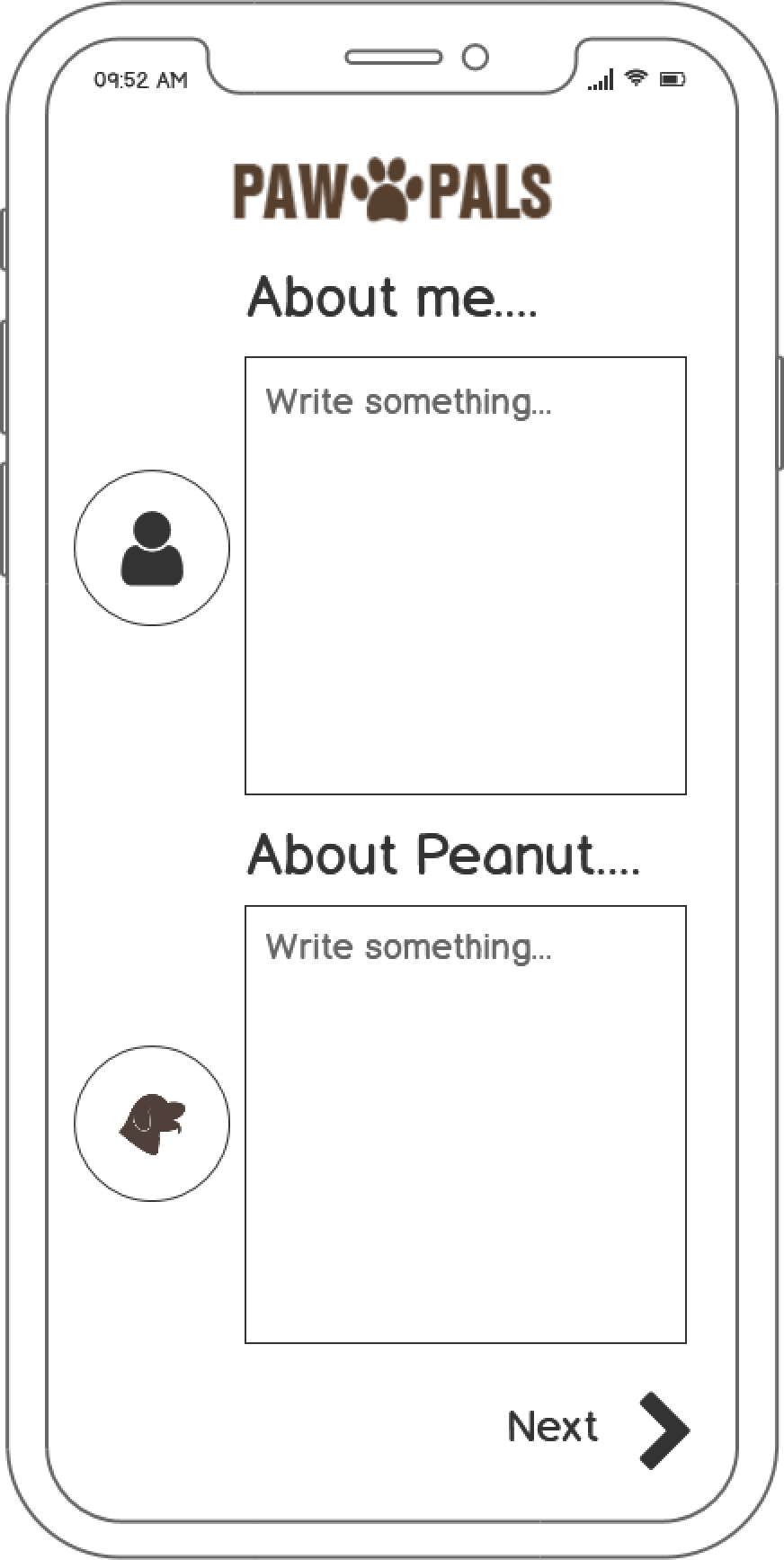
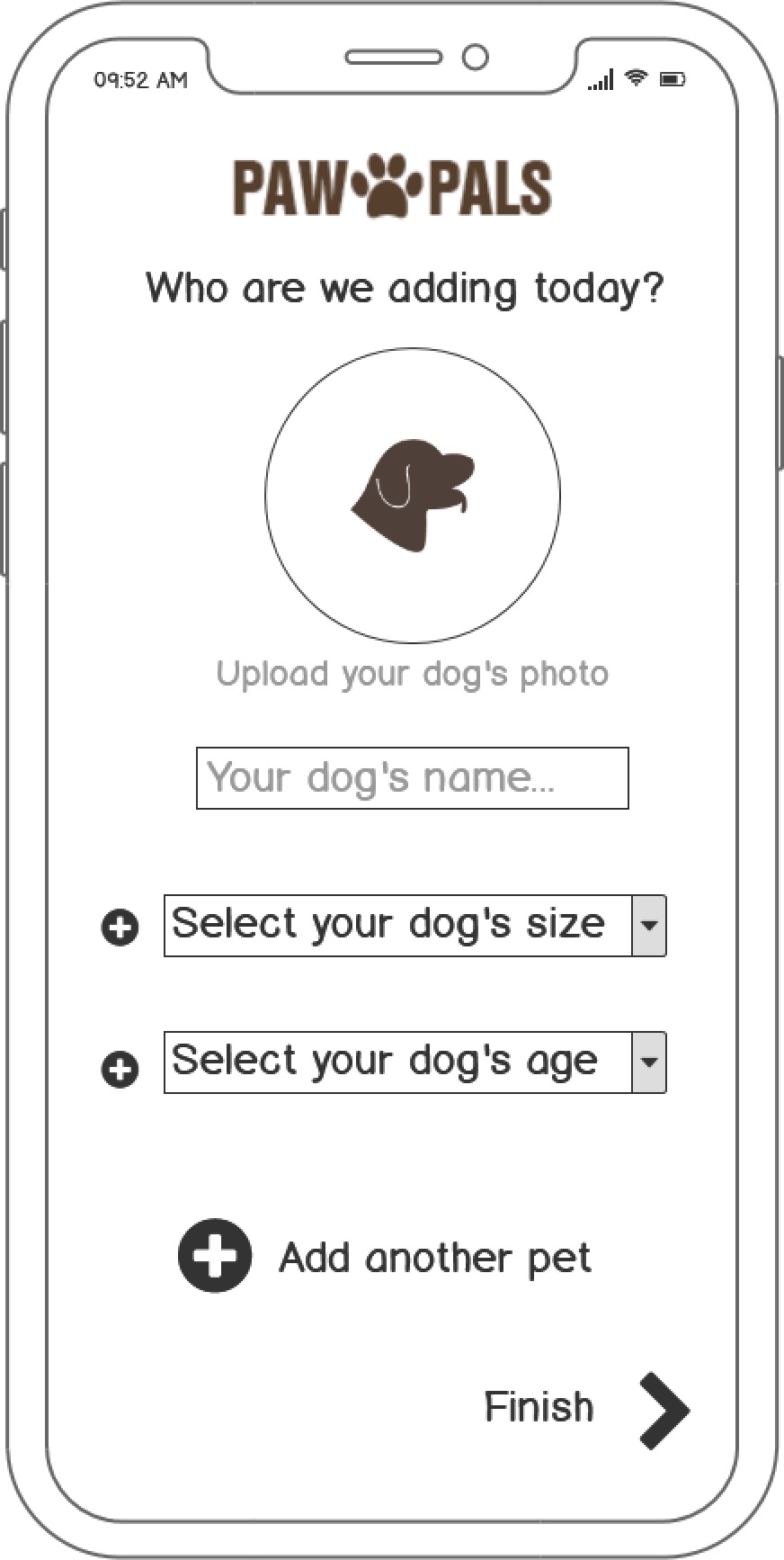
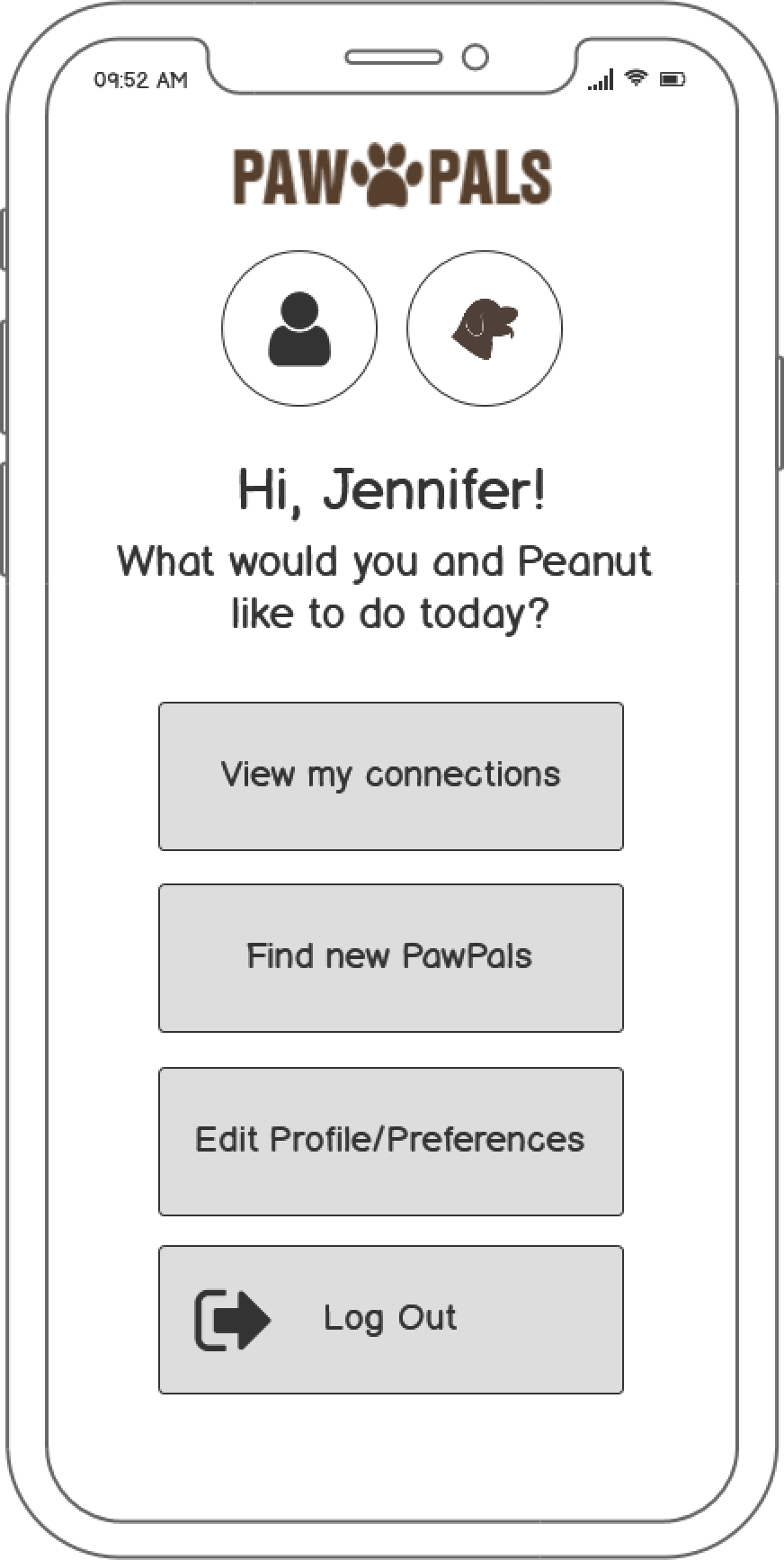
UI Design
I used Figma to set up the high fidelity versions of the wireframes. During this process, I focused on keeping the functionality simple and user-friendly while at the same time adding visual design elements to the project to make it more visually appealing for users. I created a mood board in Adobe Illustrator to help me set the style and tone of the app before converting those ideas into high-fi screens.
Mood Board for visual design:
Visual Designs:
Click on an image to see it larger.

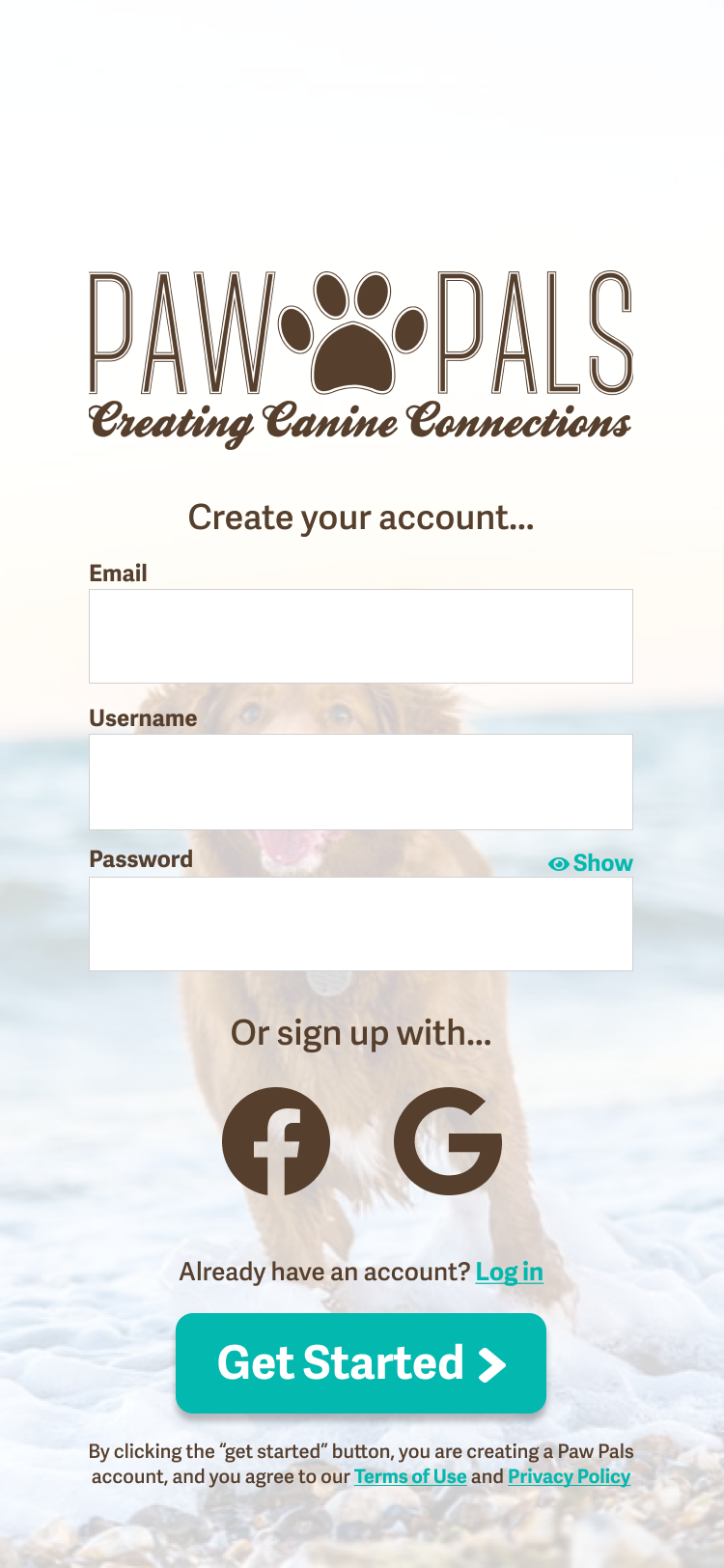

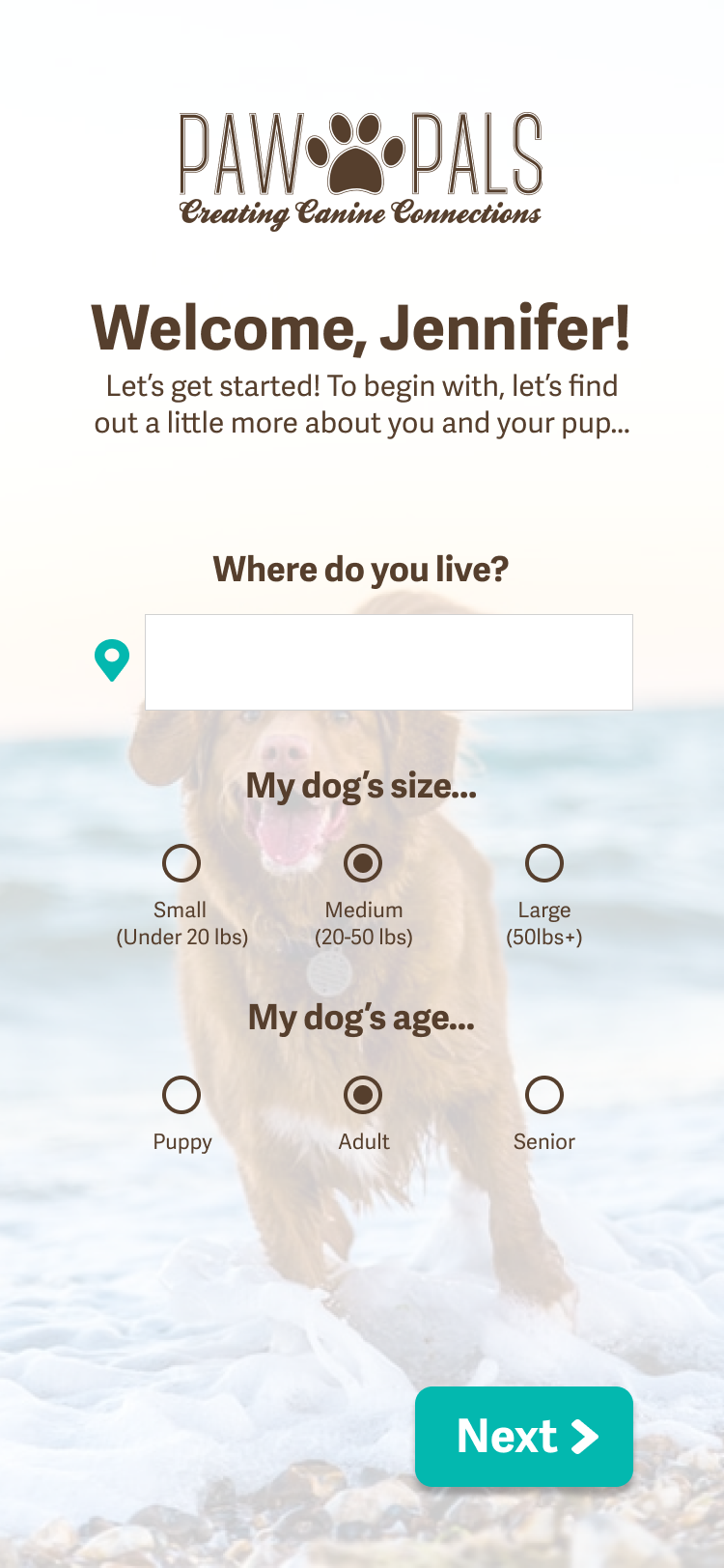
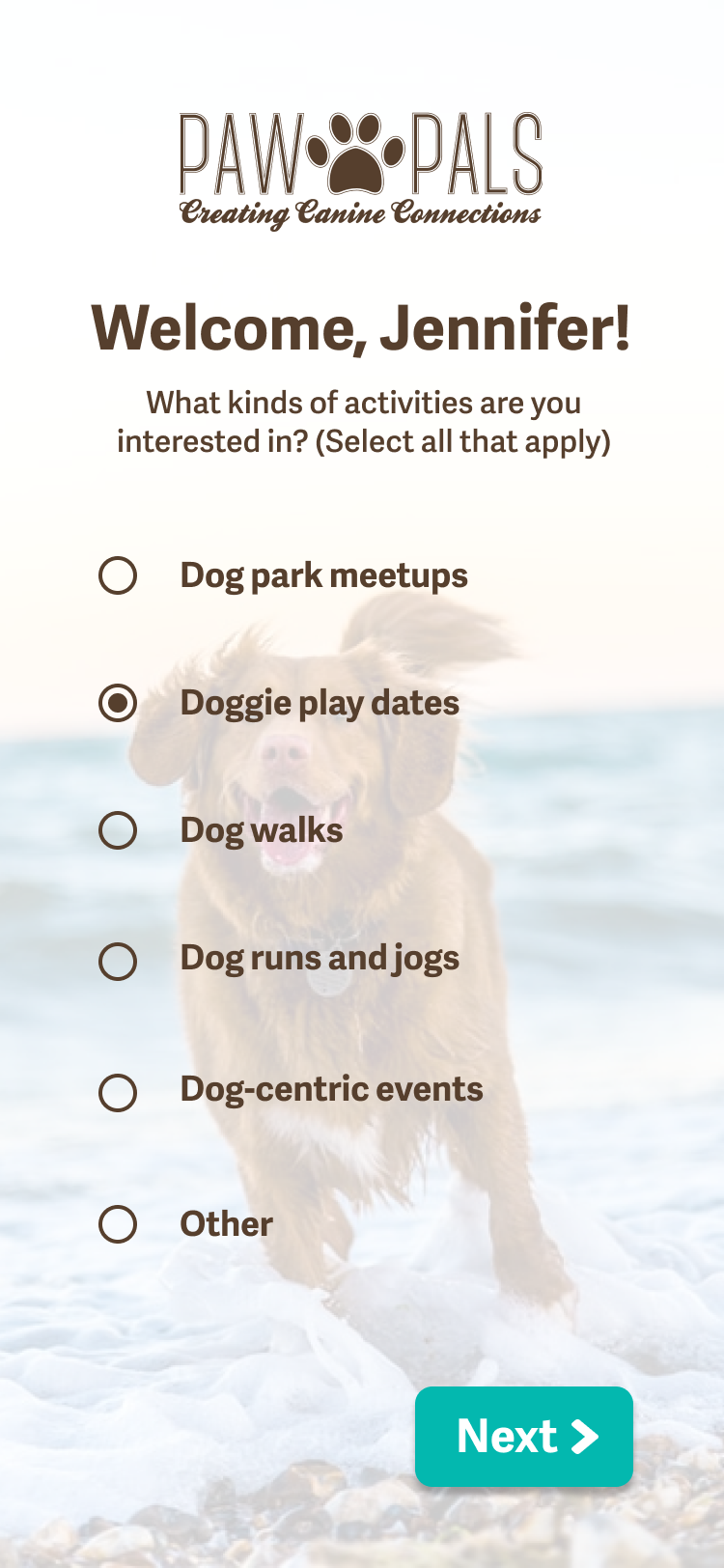
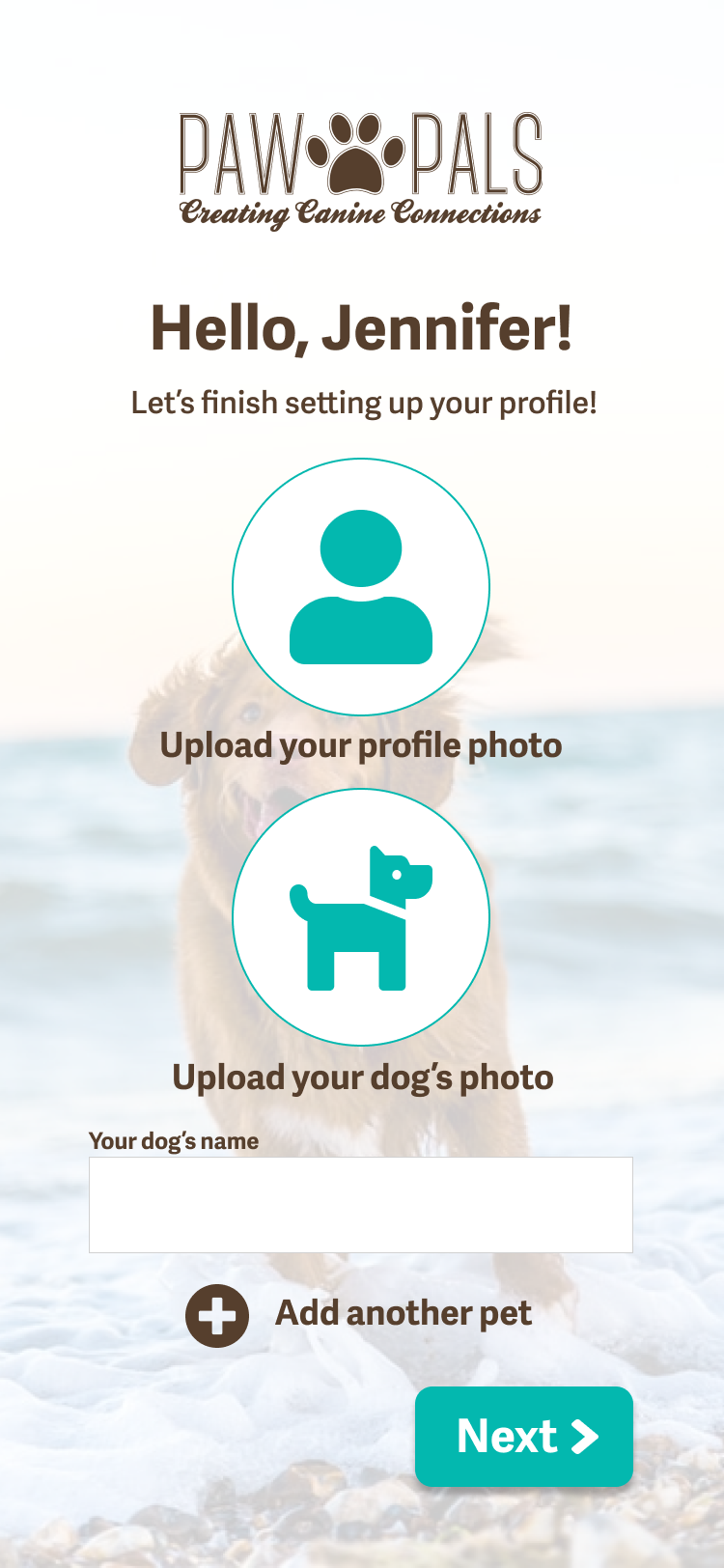
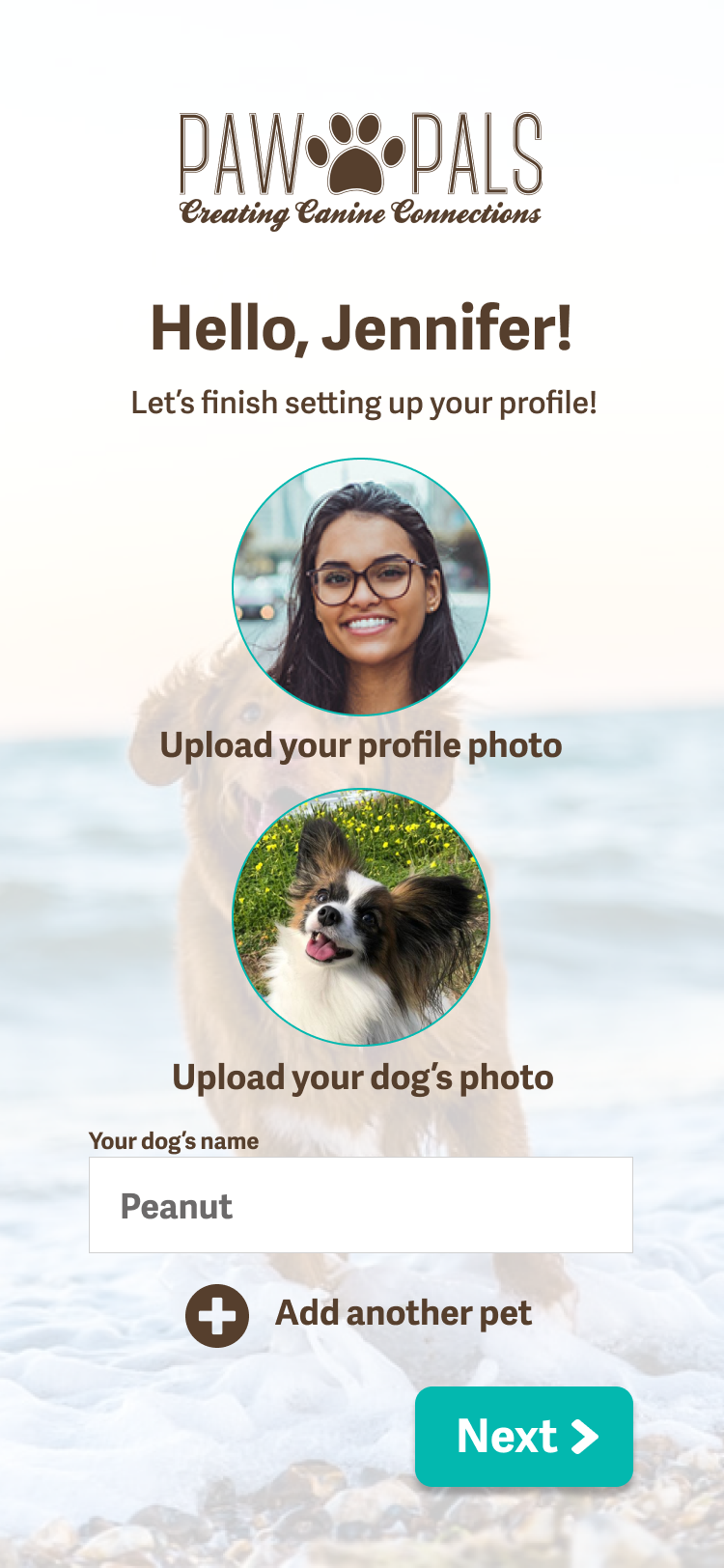
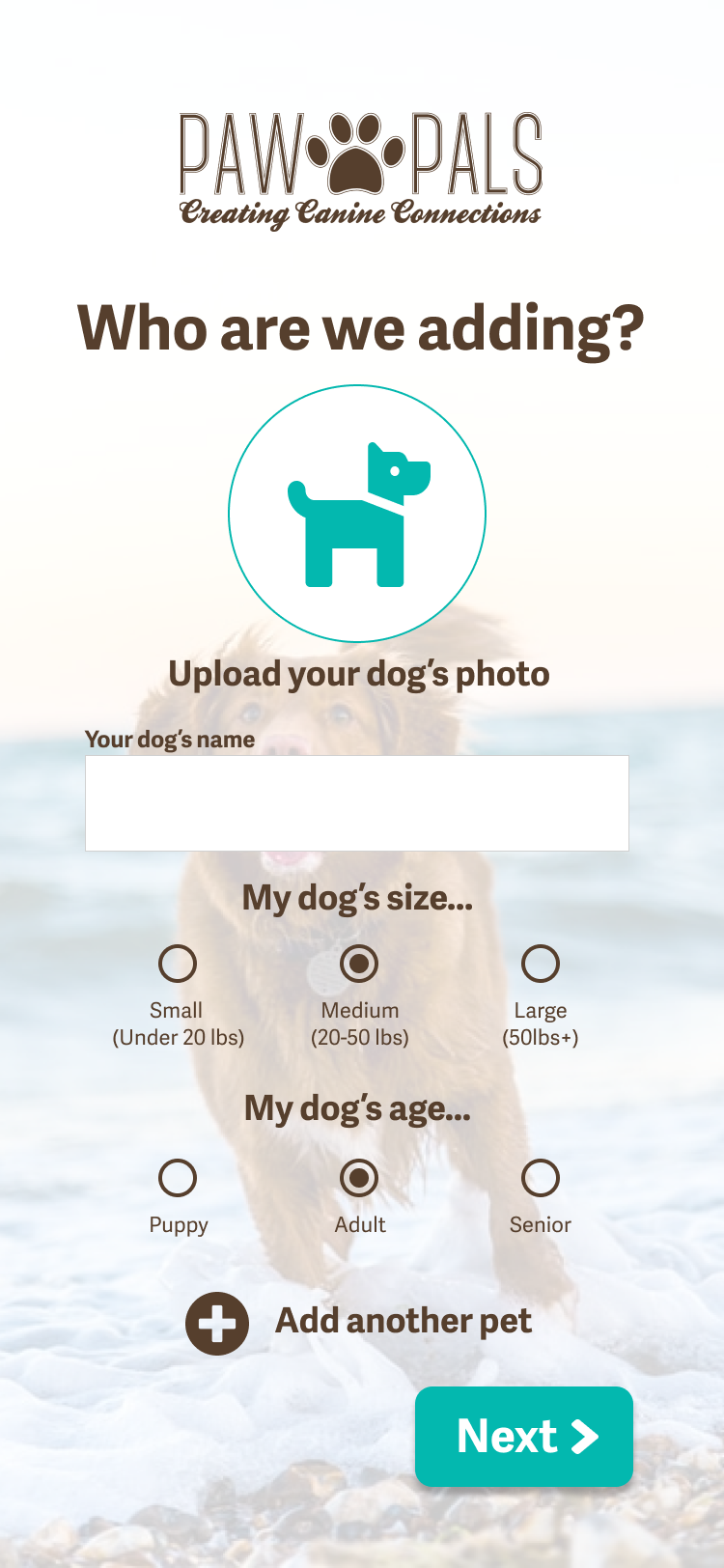

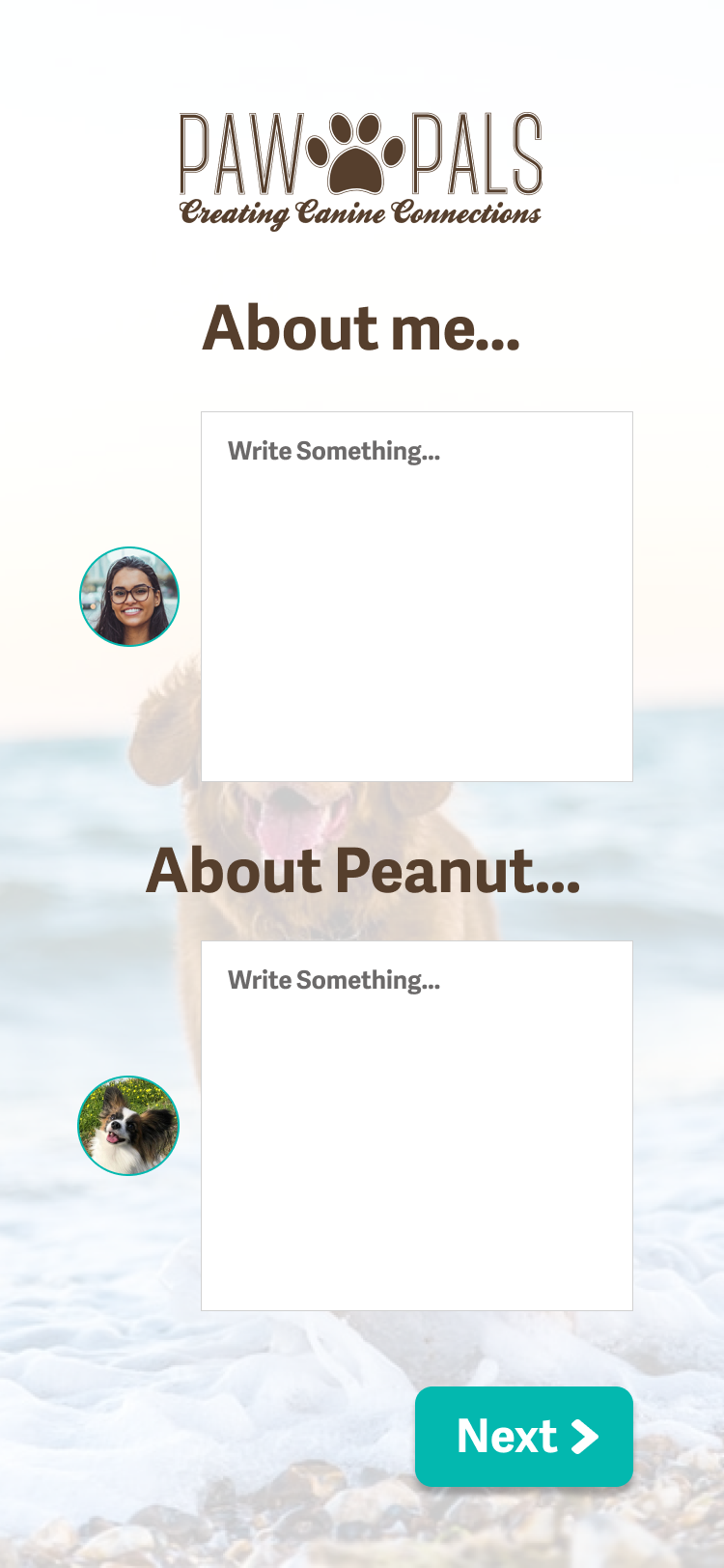
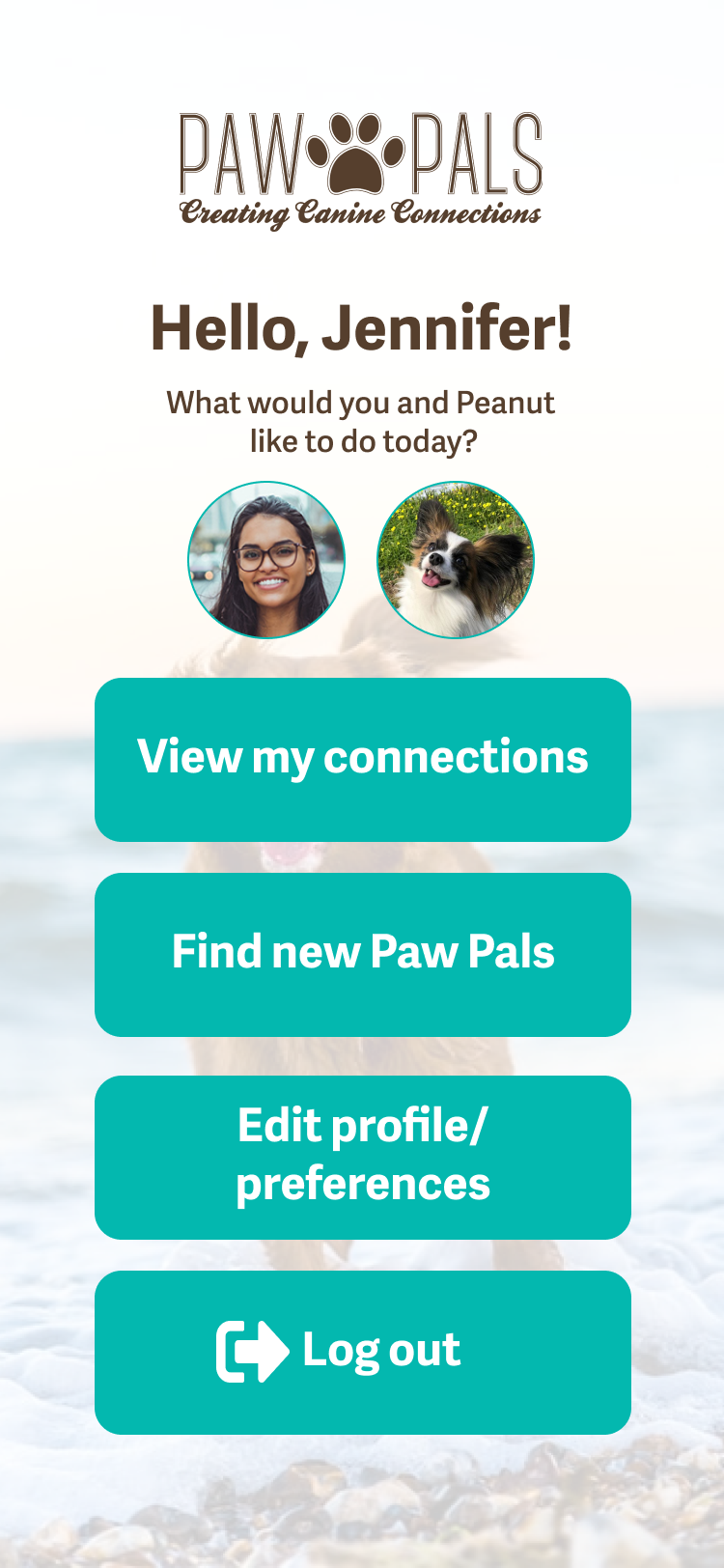
PROTOTYPE:
REFLECTIONS
Over the course of this project, I spent a lot of time talking with pet parents and what they might want out of an app to connect them with other pet parents, which led me to think of the kinds of things I might want to include in the initial signup and profile creation flow as well as future further developments to the kinds of features an app of this nature might include. I now have a much better understanding of what might draw users to Paw Pals.
At this point in the project, it is still too early to tell what the usage statistics on the app might be, but I am armed with the knowledge and experience in what kinds of useful features people would want to see in Paw Pals, which will inform future decision-making processes when moving forward with the building out of additional features.
Future Steps
The next steps will be to conduct extensive usability tests of the initial prototype using a variety of users from different backgrounds, and then to break down the findings of those usability tests in a rainbow spreadsheet, rated with Jakob Nielsen’s scale, to help determine actionable items of improvement on the app and to rank them according to importance level.
After that, edits to the prototype will be made in accordance with the findings of the test sessions.




